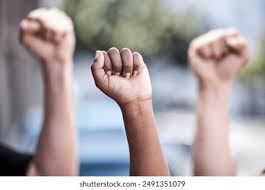
Human rights advocacy plays a critical role in ensuring that every individual, regardless of nationality, gender, race, or socioeconomic status, enjoys basic freedoms and protections. This article provides an in-depth look at the significance of human rights advocacy, its evolution, key organizations involved, and challenges faced by advocates.
What is Human Rights Advocacy?
Human rights advocacy refers to efforts and actions aimed at promoting and defending the fundamental rights and freedoms to which all human beings are entitled. These rights include, but are not limited to, the right to life, freedom of speech, freedom from discrimination, and the right to education. Advocacy can take many forms, such as lobbying, campaigning, legal assistance, and public awareness campaigns.
Historical Evolution of Human Rights Advocacy
The concept of human rights advocacy has roots in ancient civilizations, but it gained international prominence after World War II. The horrors of the Holocaust and global conflicts prompted the creation of the United Nations (UN) in 1945 and the Universal Declaration of Human Rights (UDHR) in 1948. This marked the beginning of a formalized global human rights movement. Over the years, advocacy has expanded to address issues such as racial equality, gender rights, labor rights, and the rights of refugees.
Key Organizations in Human Rights Advocacy
Several international organizations are at the forefront of human rights advocacy, working tirelessly to protect and promote human rights globally. Some of the key players include:
Amnesty International: Known for its efforts to combat human rights abuses worldwide through campaigns, research, and legal action.
Human Rights Watch: An organization that investigates human rights violations and provides detailed reports on abuses to inform global action.
International Federation for Human Rights (FIDH): Focuses on defending civil and political rights, as well as promoting economic, social, and cultural rights.
Forms of Human Rights Advocacy
Human rights advocacy encompasses a wide range of activities and approaches:
Legal Advocacy: Involves using the law to challenge human rights abuses and hold violators accountable. Organizations provide legal aid, represent victims, and lobby for policy changes.
Public Campaigns and Awareness: These efforts raise public awareness about human rights issues through social media, protests, or public education campaigns. Advocates often use art, media, and public demonstrations to highlight violations.
Lobbying: Human rights organizations lobby governments and international bodies like the UN to adopt policies that protect human rights or to sanction countries that violate them.
Challenges in Human Rights Advocacy
While human rights advocacy has made significant progress, it faces many challenges:
Governmental Resistance: Authoritarian regimes often suppress human rights advocates, restricting their freedom to operate and sometimes jailing or intimidating them.
Lack of Resources: Many organizations operate on limited budgets, which hampers their ability to provide legal aid, run awareness campaigns, and engage in long-term advocacy work.
Global Conflicts and Crises: Ongoing conflicts, such as those in Syria, Yemen, and Ukraine, make it difficult for human rights groups to access affected populations or to protect victims of violence.
Cultural Barriers: In some societies, cultural norms and traditions are at odds with internationally recognized human rights, making advocacy efforts more complex and sensitive.
Success Stories in Human Rights Advocacy
Despite the challenges, human rights advocacy has achieved many significant victories over the years. For example:
The End of Apartheid in South Africa: International pressure and advocacy played a key role in ending apartheid and securing the release of Nelson Mandela.
The International Criminal Court (ICC): The establishment of the ICC in 2002 was a major win for human rights advocates, as it holds individuals accountable for crimes like genocide, war crimes, and crimes against humanity.
LGBTQ+ Rights Movement: Over the past few decades, advocates have successfully pushed for the decriminalization of same-sex relationships and the recognition of marriage equality in many countries.
The Role of Technology in Modern Human Rights Advocacy
In the digital age, technology has revolutionized human rights advocacy. Social media platforms, like Twitter and Facebook, allow advocates to spread awareness quickly and mobilize global support. Additionally, data collection and satellite imaging help organizations document human rights abuses more effectively, even in remote areas. However, technology also presents challenges, such as online surveillance and censorship by governments.
Future Directions for Human Rights Advocacy
The future of human rights advocacy will depend on adapting to new global challenges, such as climate change, migration crises, and digital privacy. Advocates are increasingly focusing on climate justice, as environmental degradation disproportionately affects marginalized communities. Additionally, the ongoing fight for gender equality and the rights of indigenous peoples will continue to shape advocacy efforts in the coming years.
Human rights advocacy remains a vital force in promoting justice, equality, and dignity for all. While the challenges are numerous, the resilience of advocates and organizations ensures that the fight for human rights continues. By holding governments and corporations accountable, providing a voice to the voiceless, and championing equality, human rights advocacy helps build a more just and humane world.
Subscribe to Follow Global Trends for daily global news.
Find Out How To Make Money As A Full Time Writer/Blogger Guide.
To Advertise, Advertise Your Affiliate Links on FollowGlobalTrends.com for Just $1 Per Link Per Month!
Related Articles
Written By: Enyoghasi Ngozi pricillia
,

